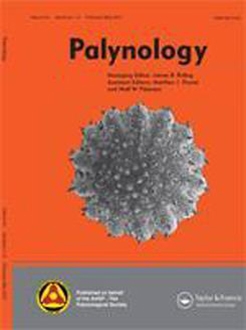The present palynological study of the Cretaceous succession in the Drazia-1 Well has been performed on 140 cutting samples covering the Barremian to Maastrichtian interval. This study yielded 33 species of spores, 16 of gymnosperm pollen grains, 14 angiosperm pollen grains and 26 dinoflagellate cysts. Based on the quantitative and qualitative palynological analyses carried out in the studied interval, 12 informal palynozones are proposed for the succession. Eight palynofacies assemblages are differentiated based on the qualitative and quantitative analyses of particulate organic matter. Khoman, Abu Roash, and middle part of Kharita formations are characterized by kerogen type II (oil prone), while the Bahariya, lowermost part of Kharita, Dahab, Alamein, and Alam El Bueib formations show kerogen type II–III (oil to gas prone). Meanwhile the upper and lower parts of Kharita Formation display type III-IV kerogen (gas to inert material). Six depositional environments are interpreted throughout the studied succession.
How to translate text using browser tools
24 January 2020
The Cretaceous (Barremian-Maastrichtian) Palynostratigraphy and Palynofacies of the Drazia-1 Well, North Egypt
Nabil M. Aboul Ela,
Sameh S. Tahoun,
Aya Raafat
ACCESS THE FULL ARTICLE
It is not available for individual sale.
This article is only available to subscribers.
It is not available for individual sale.
It is not available for individual sale.

Palynology
Vol. 44 • No. 1
January 2020
Vol. 44 • No. 1
January 2020
Cretaceous
Egypt
paleoenvironment
palynofacies





